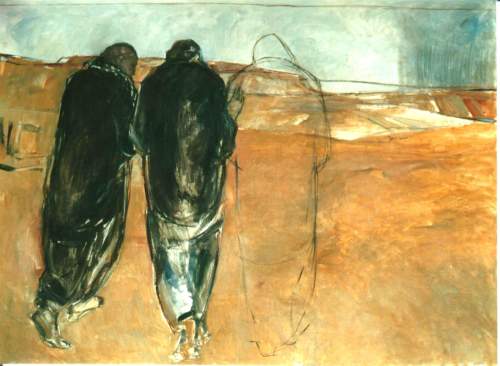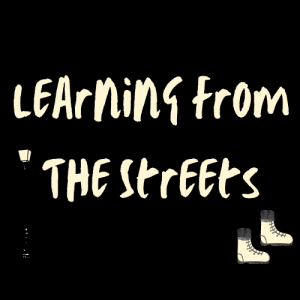Richard Passmore in his recent blog on Sunday Papers : Calling the walls to dust (5) http://www.sundaypapers.org.uk/?p=3274 wrote the following in respect to pushing beyond missio dei:
“Perhaps the challenge is to feel where people and place are condensing, and use a language that is about coming together to create space to discover G-d. If I was pushed I would say a more helpful wording is that we need co-create G-d with the community, we need the community to help us find the hide and seek God, who at the moment of capture hides, is seen through the trees, and formed as we share with one another the glimpses we see. The space to do this can only be created as people and place come together in relationship, as we empty ourselves of what is gone before and discover the self emptying G-d as Christ in incarnated amongst us.”
Finding and discovering the Hide and seek God is undoubtedly contentious, or at least contemplating that God is hidden, absent or purposely undiscoverable should be quite contentious, and, not wanting to pre empt Richard here, but if this is where he might have been driving at, then this critiques the omni-presentness of classic deism God on one hand, and also the With-ness of Emmanuel Jesus. However, its something that has resonated with me for a while, especially in relation to the incidents of the Emmaus story, and also a theological discussion regarding the performance aspects of the concepts of Theo-drama which i thought id share to hopefully add to the conversation.
Some words from Luke 24:
“As they walked along they were talking about everything that happened, as they talked and discussed these things Jesus himself suddenly came and began walking with them. But God kept them from recognising him”
In this specific scenario, if re enacted on the stage, there would be a very physical entrance onto the stage of Jesus, in physicality, but also with the backdrop of a hidden figure, God, who directed the disclosure of revelation. And both working in tandem… yet as the two disciples walked, they were without Jesus, then with Jesus, and then later, discovered Jesus, and realised Jesus was with them for longer than they realised. In the Drama of Doctrine (2005) Vanhoozer discusses the concept of the Theodrama, and that within this, in light of evangelical theology, God has can enter and entered into a relationship with the World, and into the course of Human events, in such a way to make a decisive difference. In the same way God freely enters the world, there are some references Biblically to moments where God also exits. For example Luke 9:31. That God would choose to stay, choose because of covenant promises does not preclude that he could go and has the power, as creator, to do so. So Vanhoozer may be onto some thing when he says ” The God of the gospel is free to come and go as he pleases” (2005:40)
In Vanhoozer (2010) he goes on to say : “For God is the always active subject who determines his own narrative, a story of free, loving and wise self communication. God decides when and where (and under what form) to appear, unlike humans, who have no choice in the matter”
A critique of this is from Thiselton (2007) – where he argues that “Can we properly press the picture of a player to imply God’s absence from the scene? Can we actually draw a contrast between divine absence and times of divine hiddenness? “( Thiselton 2007:78)
Moltmann states the following : “Hiddenness presses forward.. into that realm of possibilities that lies ahead and is so full of promise” (Theology of Hope p213)
and Miskotte :; “To declare the hiddenness of God is in itself a confession of faith.. the hiddenness of God, pregnant with glad remembrance and full of happy promise, surrounds us, as it were, with the presence of an absence” (1967:51)
Yet going back to the disciples on the road, there was a very definite point when they were not with Jesus, and similarly a definite point where they could articulate his nearness. And what about the disciples who went back fishing, they were ‘without’ Jesus for a while – until the re encounter on the beach ( John 21) . And yes I realise that the physical Jesus couldn’t be everywhere.. but the Spirit of God, the Spirit of Jesus could have been realised as being with them.
By suggesting that God can be discovered, implies that not all in his entirely has been found, all may be here, but far at the same time.
Going back to the with-us-ness of the incarnation; That act of incarnation is the culmination (but not the conclusion) of a series of authorial communicative and covenantal acts in our midst. In Jesus Christ God takes time for Human covenant partners, communicating to us as one of us : “the true and fullest power of deity is displayed in the fact that it has such a power over itself and its creature that it can become one with it without detriment to itself (Barth)” (Vanhoozer 2010:489)
In this way, to be able to wholly determine God we would be changed beyond recognition, to have fullness of knowledge – we would become God, yet so his hiddenness and revealing and presence are gifted to us, a triune dance with us as the partner, hearing the music, but not always sure where our partner is dancing or where he is.
So can we play hide and seek with God, can G-d be discovered in our conversations with people, on the road, can we discover that realm of possibilities, both from discovery from unknowingness and rediscovery from hiddenness. The paradox of with and hidden, communicative and mute, heard and silent, entering and exiting, emerging and already all seem to be real in the moments of walking along the the road, where the stage is set, the actors are ready and the world is waiting to be invited. We dont co-create God in our image, but co inhabit those aspects of God once hidden, undefined , unimagined, like a new revelation of the word that so burned those disciples on that road to Emmaus – it was something new.
For more on this: please see:
Vanhoozer (2005) The Drama of Doctrine, and (2010) Remythologising Theology, and Thiselton ( 2007) The Hermeneutics of Doctrine.


Pingback: SUNDAY PAPERS